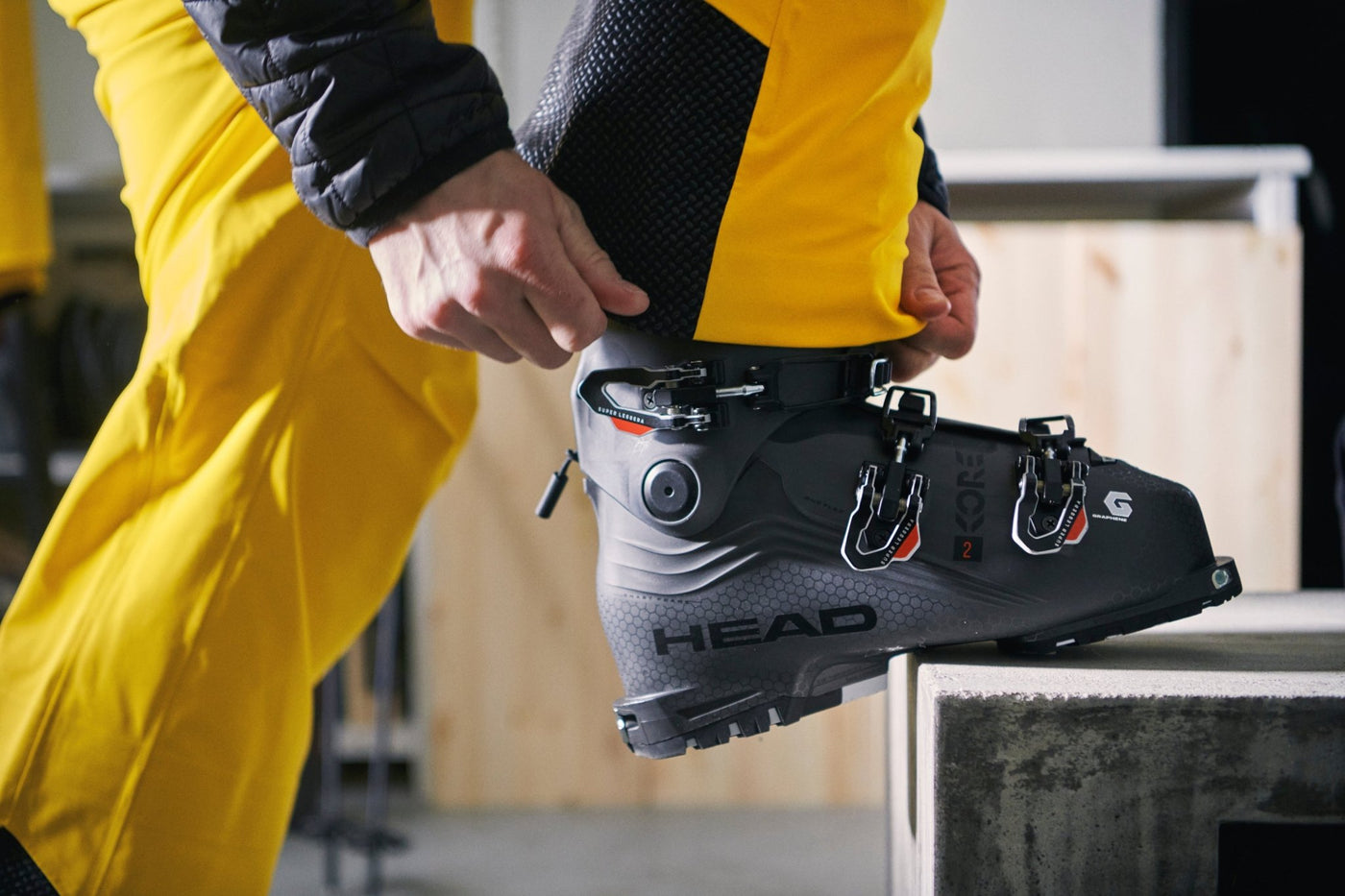A Beginner's Guide to Buying Ski Boots
Ski boots are the primary connection between you and the snow. They relay your body’s energy to your skis, turning them into extensions of your body.
Improperly fitted boots can seriously mess with this connection. Case in point: ski boots that felt ultra comfortable in the store – a sure sign that your boots are too big – can turn into disasters on the hill. In that case, you’ll notice a significant delay on turns and you might even lose control.
There are many customizations involved in fitting a ski boot. You’ll need to consult with a professional boot fitter to get the best fit for your foot and skiing ability.
We strongly encourage you to make an appointment with one of our boot fitters to ensure you put your best foot forward (sorry) on the slopes.

Why you should invest in quality ski boots?
As a beginner, you want to set yourself up for success from day one. A good pair of ski boots will vastly improve your comfort level and give you more control as you send it down the mountain.
What are the most important factors to consider when shopping for ski boots?
Size The length and width of your foot in centimetres. Your boot fitter will measure your feet when you come into the store. This is the easiest and surest way to find your perfect size.
Fit Your ski boots should fit snugger than your everyday footwear. That being said, beginners can get away with a roomier boot. Your boot fitter will help you find the right balance between comfort and performance.
Flex The stiffness or flexibility of your skis will determine how much effort it takes to make your skis move. Not surprisingly, beginner’s ski boots have more flex.
Skiing Style Professional skiers often spring for tighter skis because they provide more control. But you can go for a somewhat roomier fit if you’re just starting out or only plan to ski for a handful of days. You’ll be way more comfortable and your feet will thank you.
Finding the right fit
Getting a boot fit at Skiis & Biikes is the first step. We’re not just saying that. There is no at-home alternative to a good ole boot fitting. That being said, there are some general rules of thumb you should know.
Mondo, Mondo, Mondo
Ski boots use the Mondo point sizing system. The Mondo system measures the length of your foot in centimetres.
Your boot fitter will measure your foot when you come into the store, so there’s no need to know your size off the top of your head.
Although many ski brands use half sizes, there is no difference between a full and half size. Weirdly, skis that are labelled 24.5 and 24 will have the same plastic shell size; however, the liner will be extra thick in a 24 to take up that half size. Make sense?
How should a ski boot fit?
Your ski boot should fit snugger than your regular shoes. There’s a good reason for this: having a roomy ski boot could lead to discomfort and even injury. When wearing your boot, you should feel your toes making light contact with the boot tip and a solid heel hold when you’re buckled up and flexing forward.
If your feet are on the wide side, you might want to choose a boot that is 100 mm or more in width. If you have narrower feet, a ski booth that is less than 100 mm would be the way to go.
What's the best ski boot for beginners?
One that fits your foot. The right length, the right width, shape and flex. A boot fitter will ask you a variety of questions to help you determine which combination makes sense for your feet, abilities and skiing style.
When will the feeling return to my toes?
We can’t say for sure. But we can tell you that one of the best feelings is pulling off your ski boots at the end of a long day on the hill.

